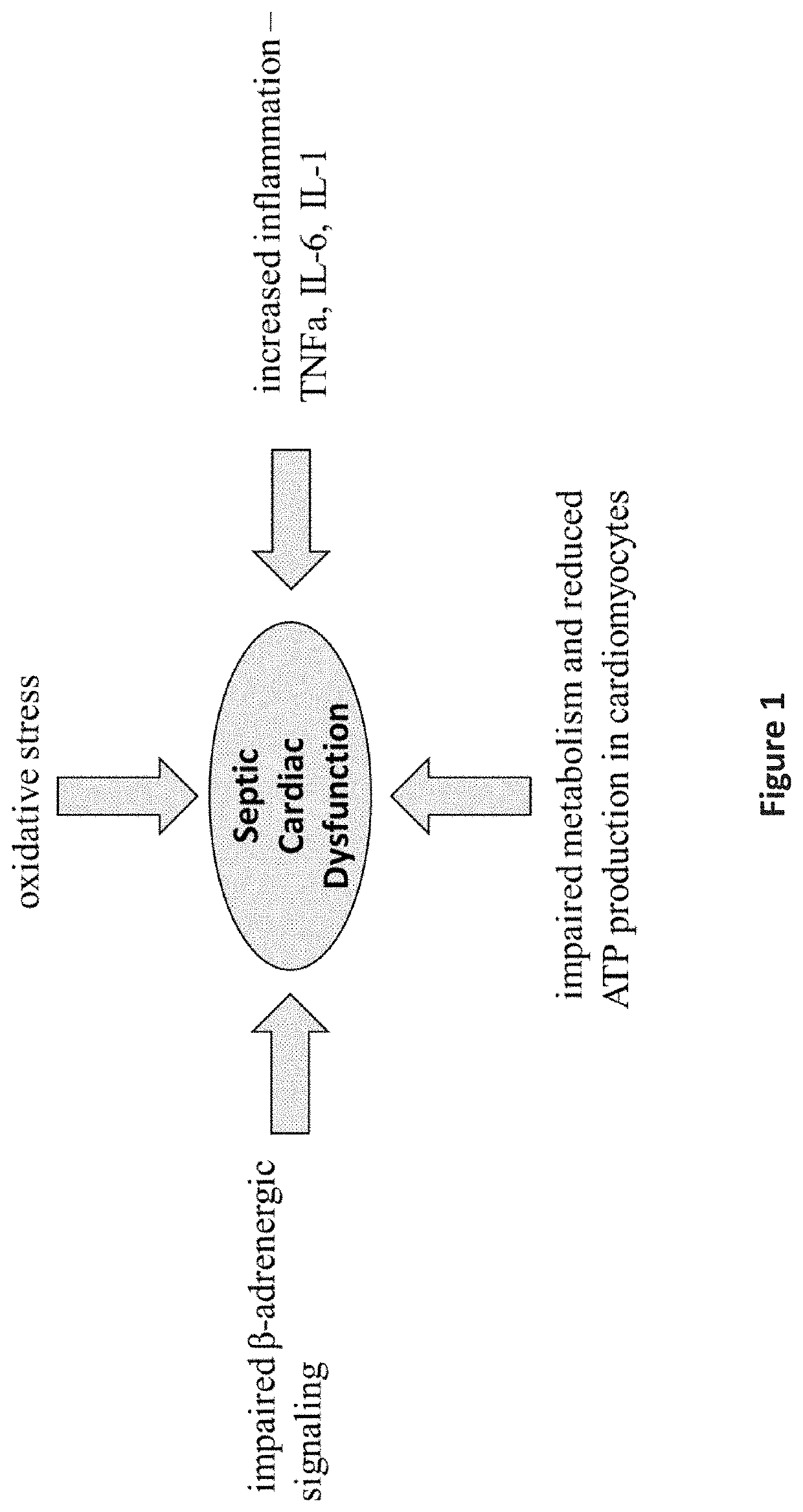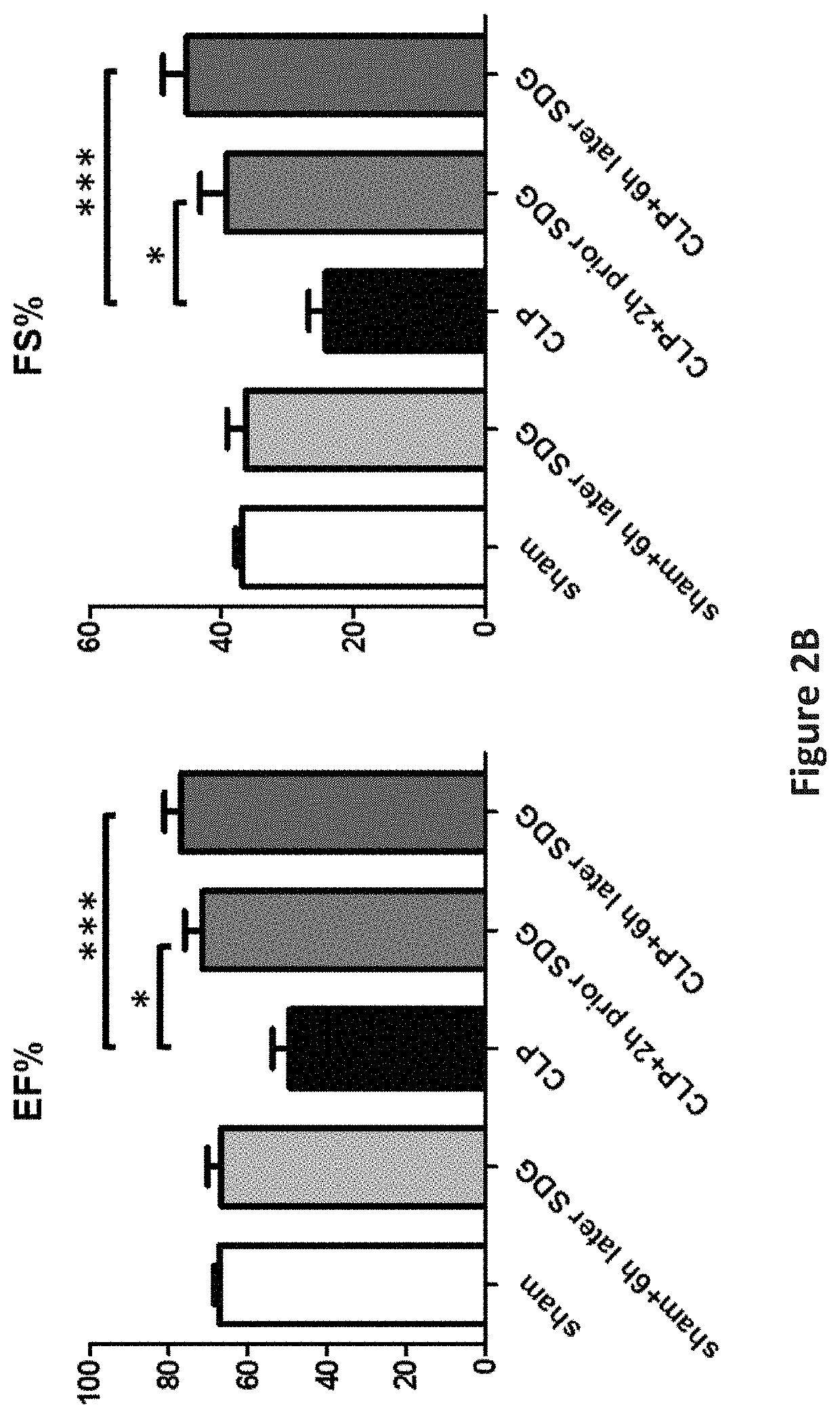Compositions and methods for treating septic cardiomyopathy
a technology of septic cardiomyopathy and compositions, applied in the field of septic cardiomyopathy compositions and methods, can solve the problems of ineffective treatment, unable to achieve effective treatment, and the basic pathophysiologic defect of sepsis, and achieve the effect of improving the mitochondrial function of cardiac myocytes
- Summary
- Abstract
- Description
- Claims
- Application Information
AI Technical Summary
Benefits of technology
Problems solved by technology
Method used
Image
Examples
example 1
SDG Prevents Septic Cardiac Dysfunction
[0131]Mice were either sham treated or subjected to cecal ligation puncture (CLP). SDG was administered either 2 hours prior to CLP or 6 hours following CLP. Echocardiograms from each group of mice was collected (FIG. 2A) and ejection fraction (EF, left) and fractional shortening (FS, right) was determined. As shown in FIG. 2B, SDG treatment either before or after CLP restores EF and to pre-CLP levels.
example 2
SDG Increases Adenylyl Cyclase (AC) Expression In Vivo
[0132]Mice were either sham treated (n=3) or subjected to cecal ligation puncture (CLP, n=6). SDG was administered to three mice following CLP. FIG. 3A shows a western blot of adenylyl cyclase V / VI expression in each mouse. The graphical representation of the data averaged across each group (FIG. 3B) shows that SDG treatment restores cyclase V / VI expression pre-CLP levels.
example 3
SDG Increases cAMP Activity in AC16 Cells in Non-Stimulated Conditions
[0133]AC16 cells were either left unstimulated or stimulated with either forskolin or isoproterenol for 12 hours and then treated with SDG, Liposaccharide (LPS) or both. While SDG treatment increased cAMP levels, this increase was abolished in the presence of LPS (FIG. 4). In addition, the SDG-dependent increase of cAMP levels appears to be insignificant in the presence of forskolin or isoproterenol-dependent cAMP levels increase.
PUM
 Login to View More
Login to View More Abstract
Description
Claims
Application Information
 Login to View More
Login to View More - R&D
- Intellectual Property
- Life Sciences
- Materials
- Tech Scout
- Unparalleled Data Quality
- Higher Quality Content
- 60% Fewer Hallucinations
Browse by: Latest US Patents, China's latest patents, Technical Efficacy Thesaurus, Application Domain, Technology Topic, Popular Technical Reports.
© 2025 PatSnap. All rights reserved.Legal|Privacy policy|Modern Slavery Act Transparency Statement|Sitemap|About US| Contact US: help@patsnap.com



